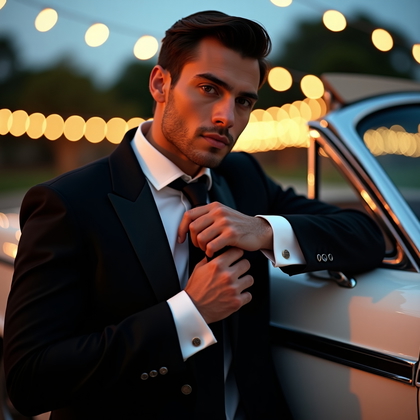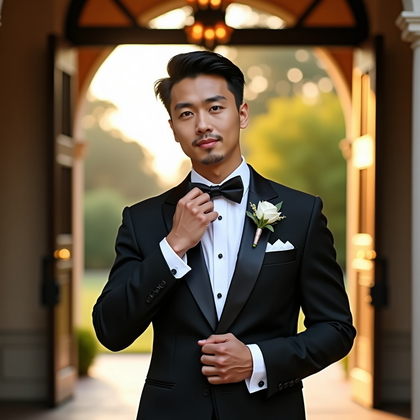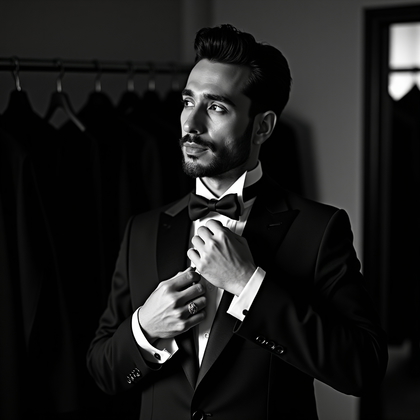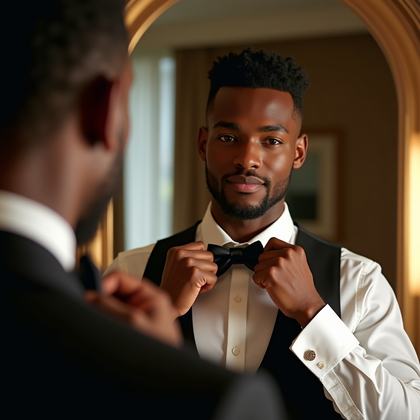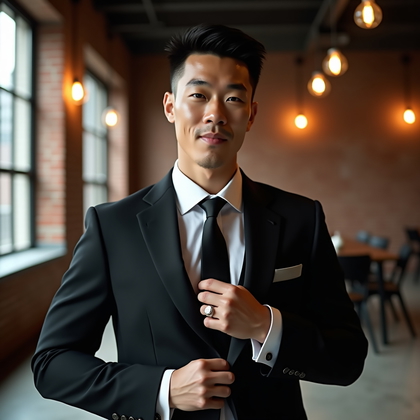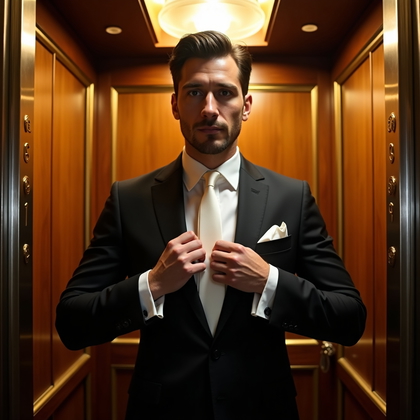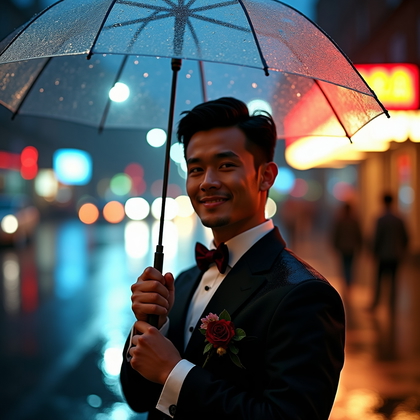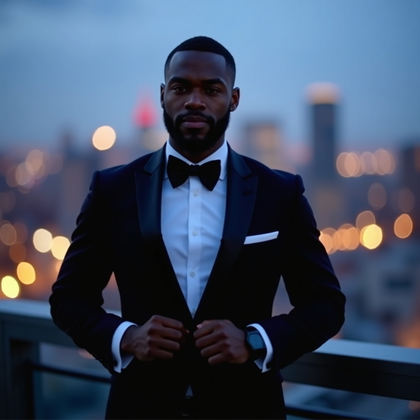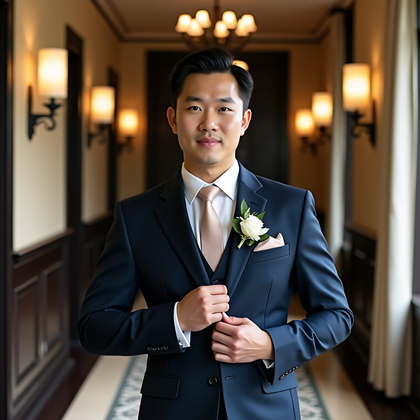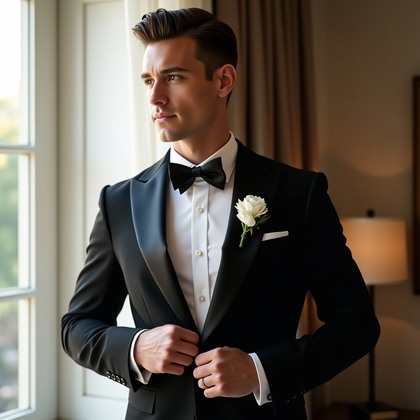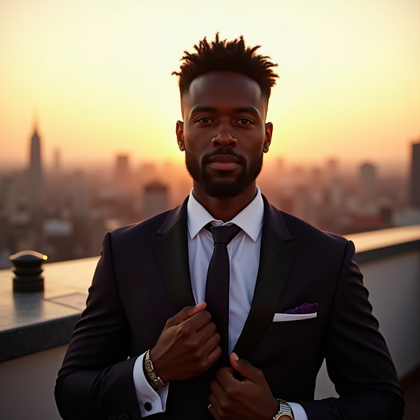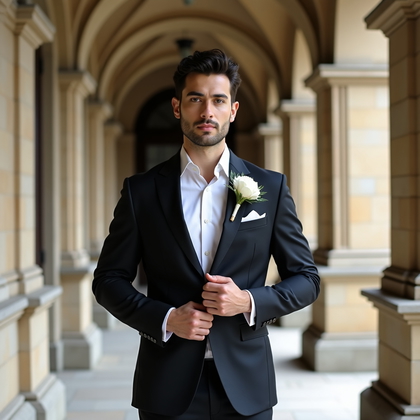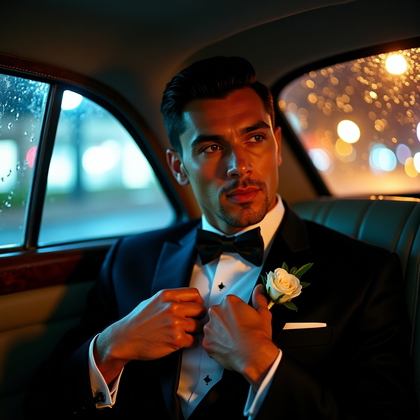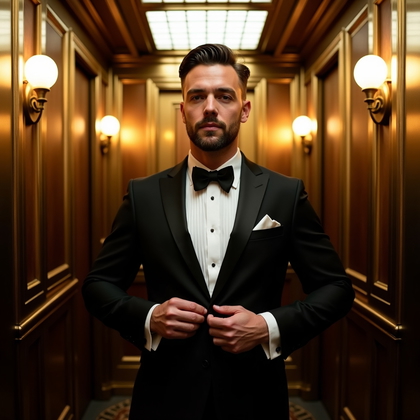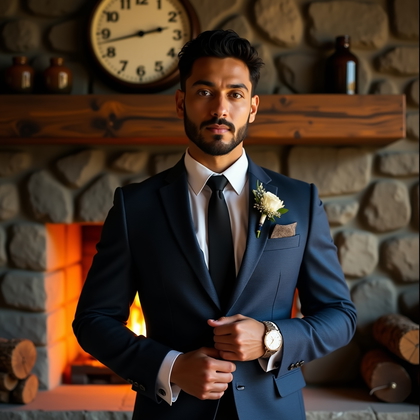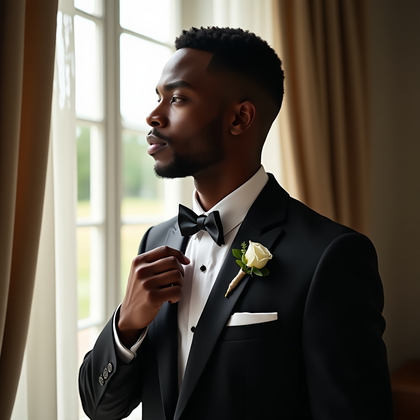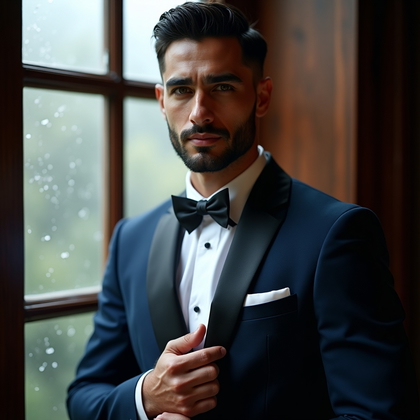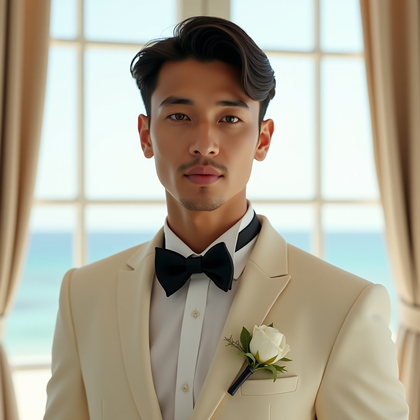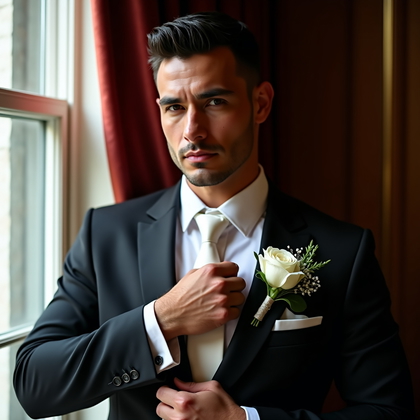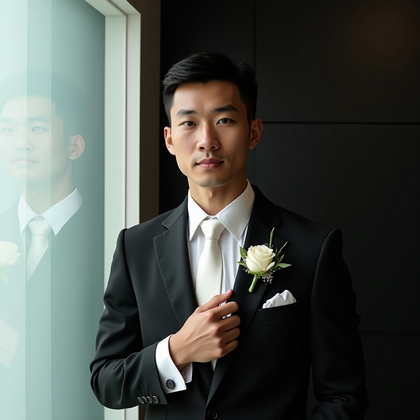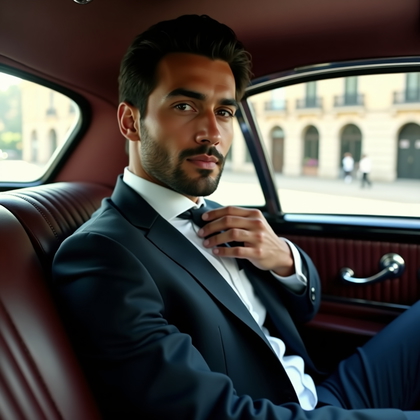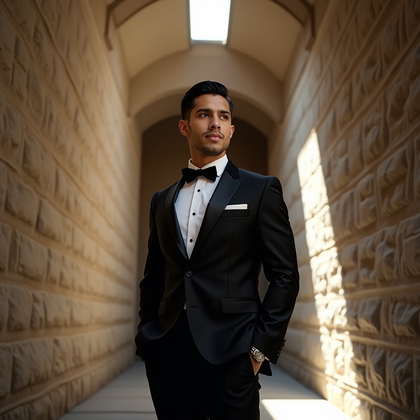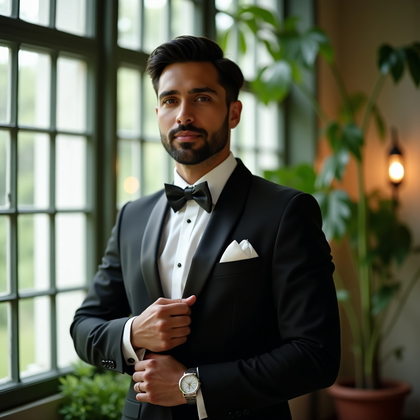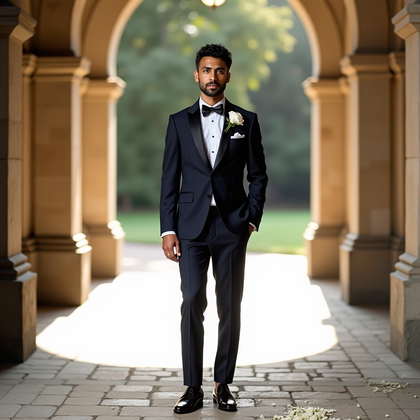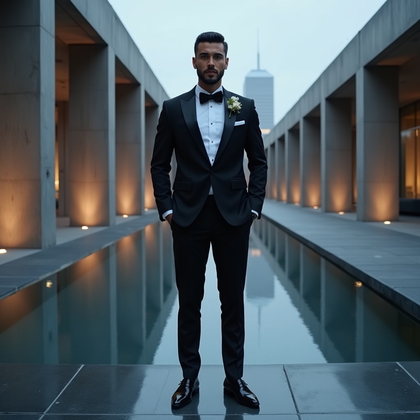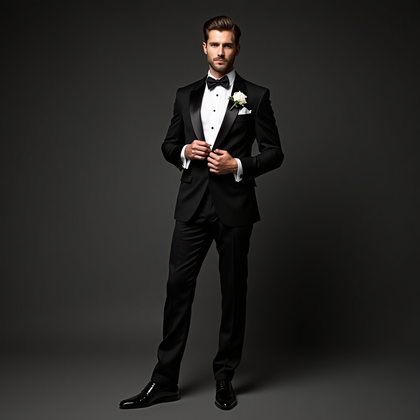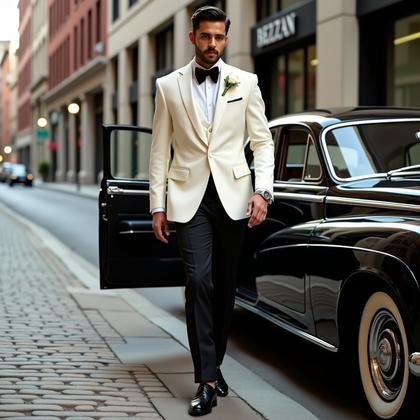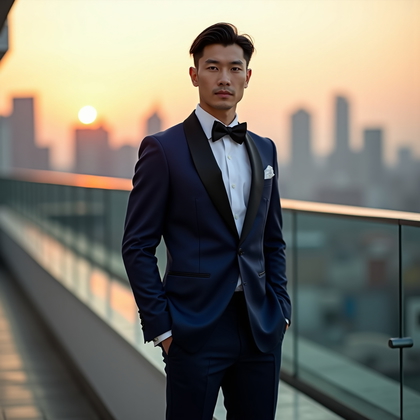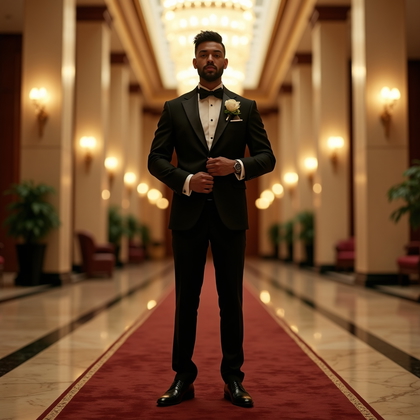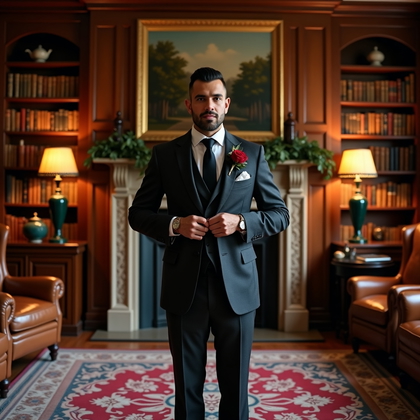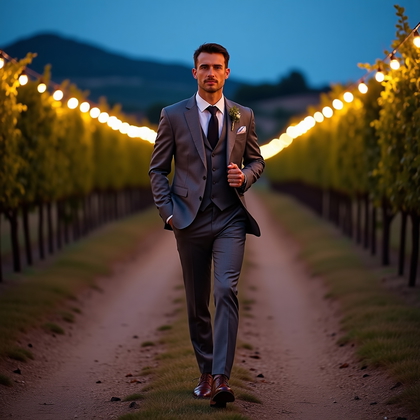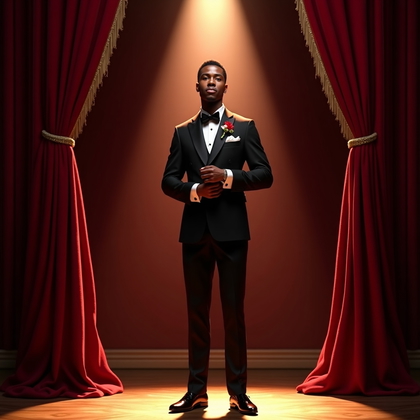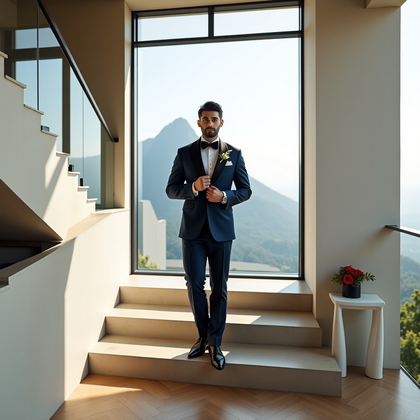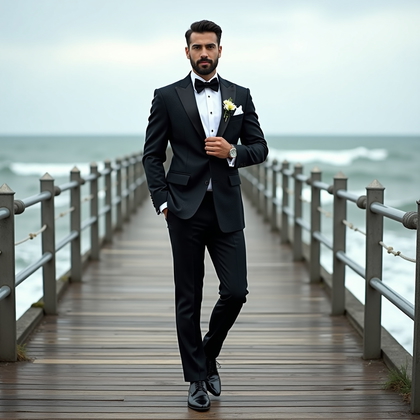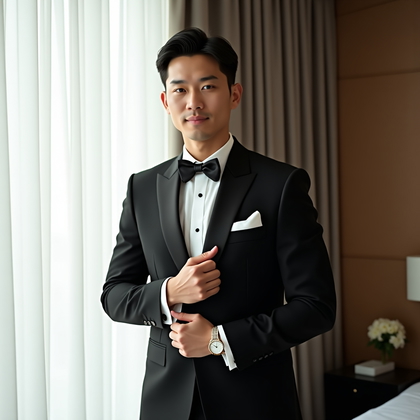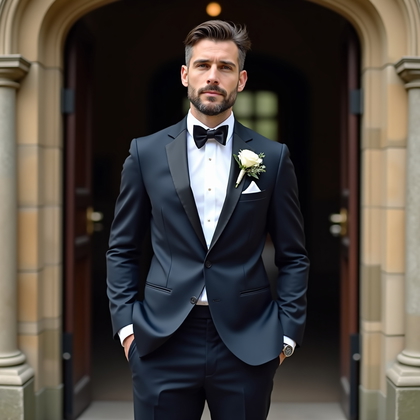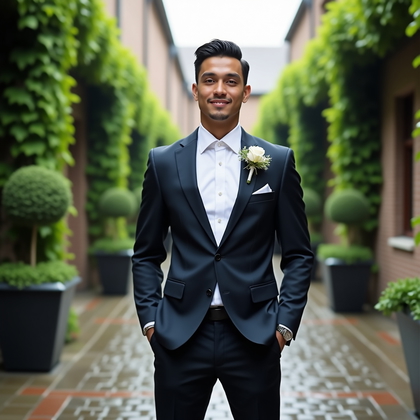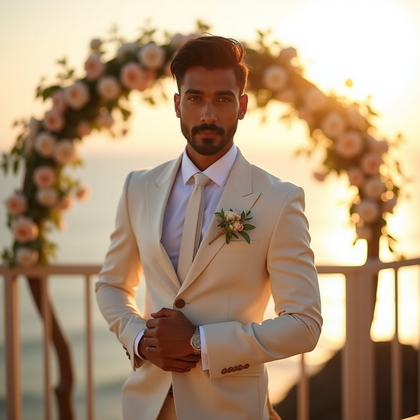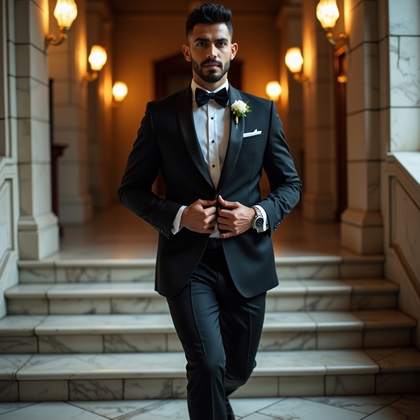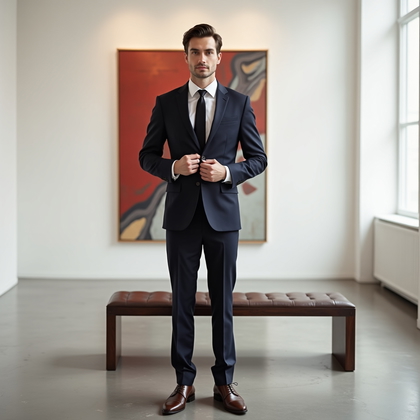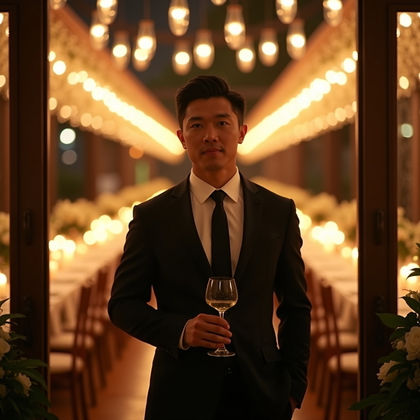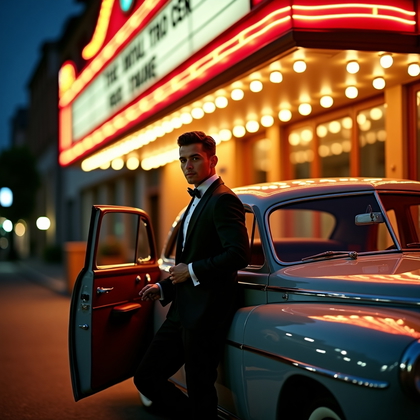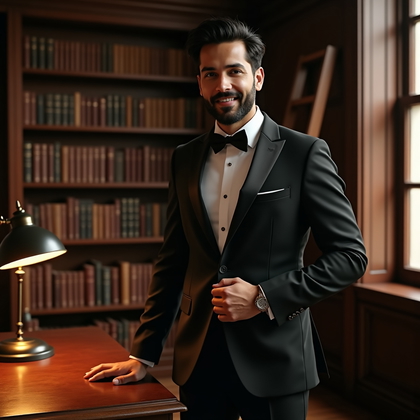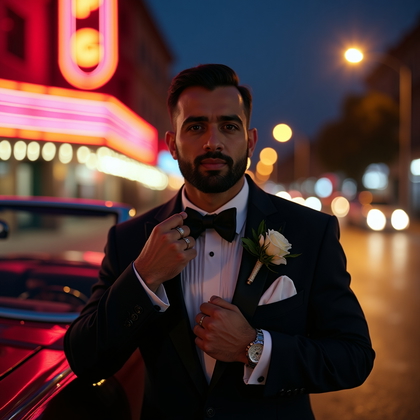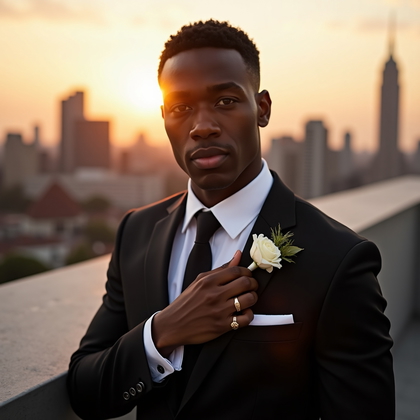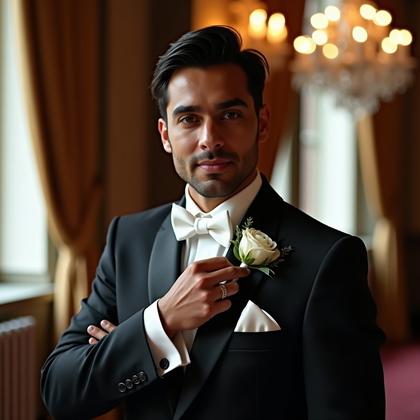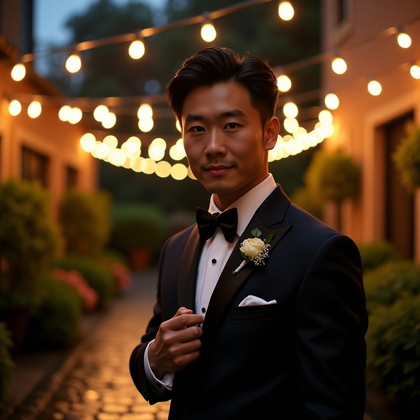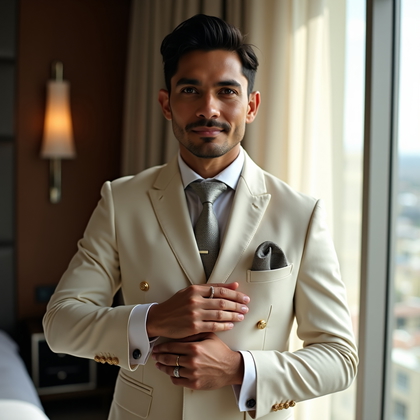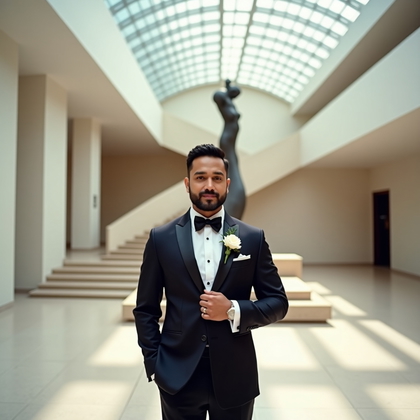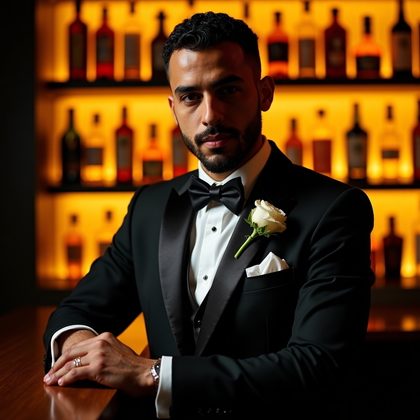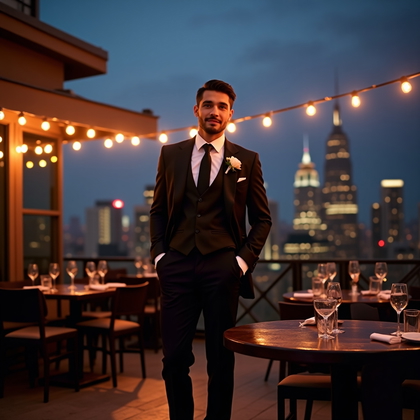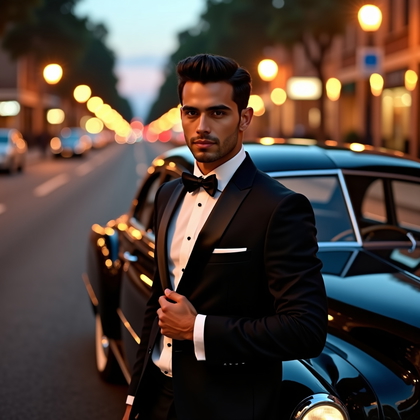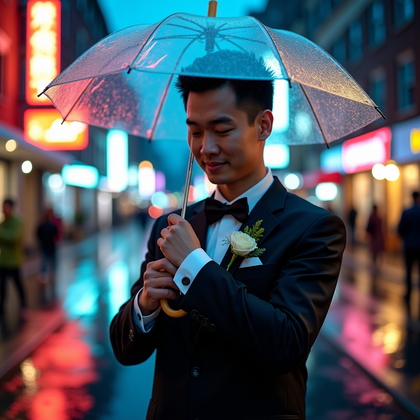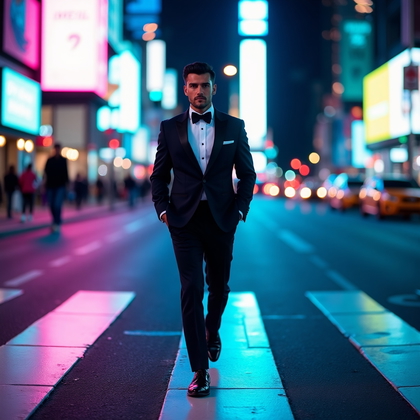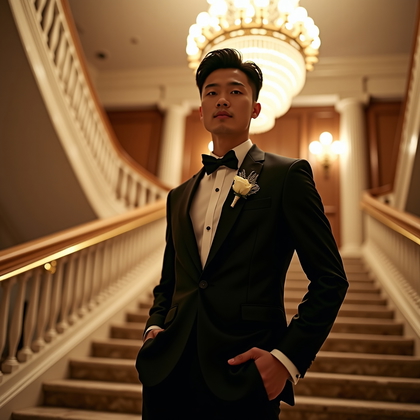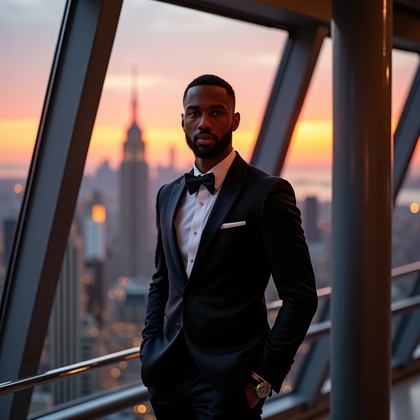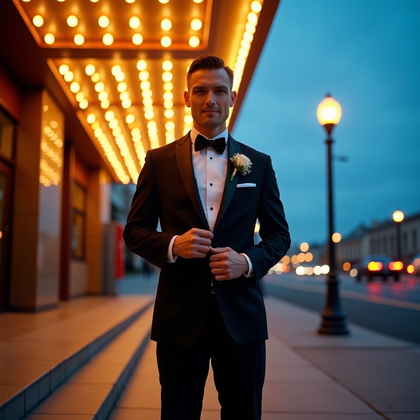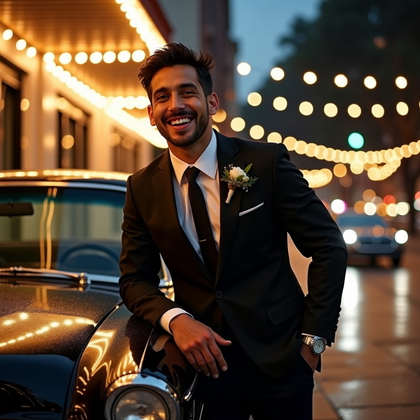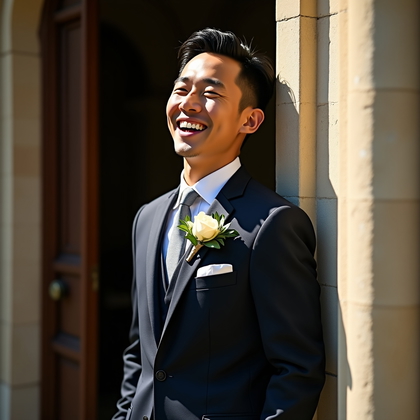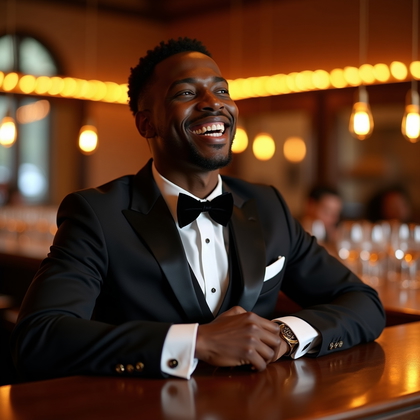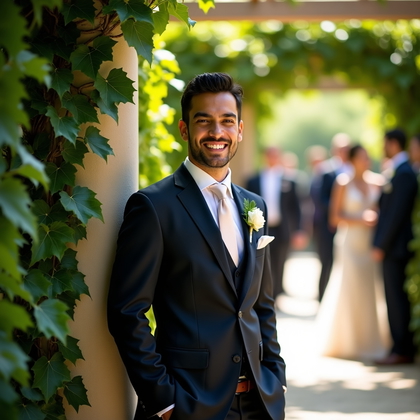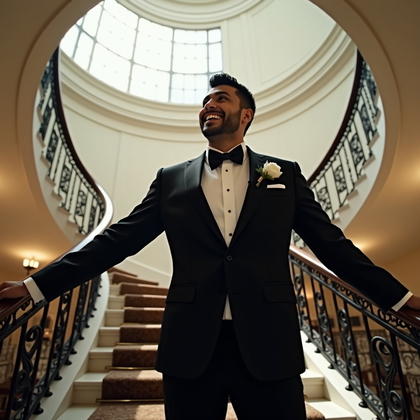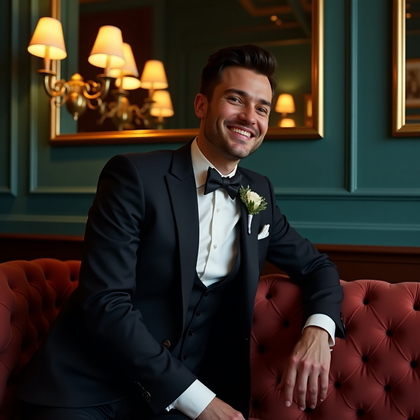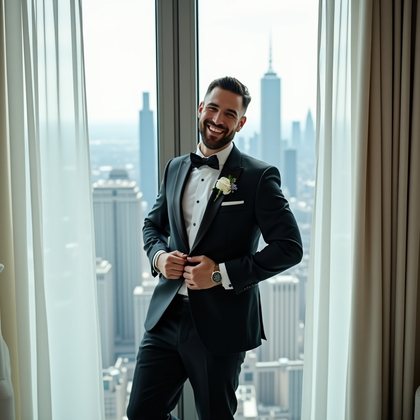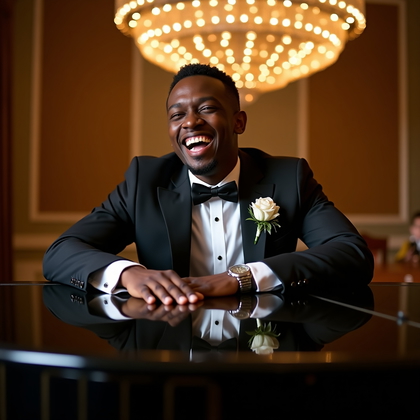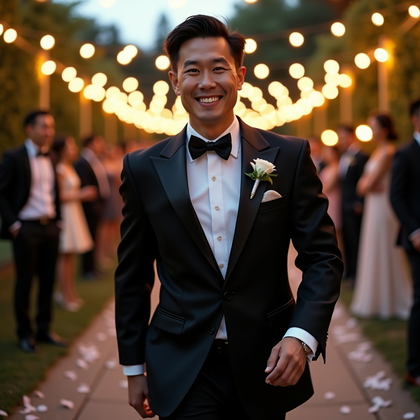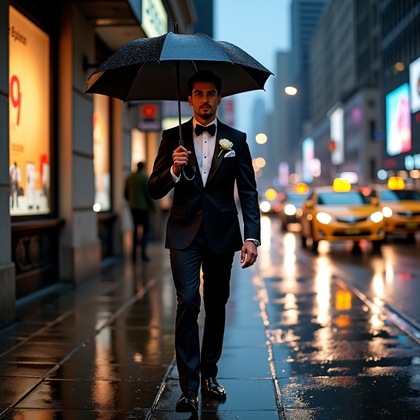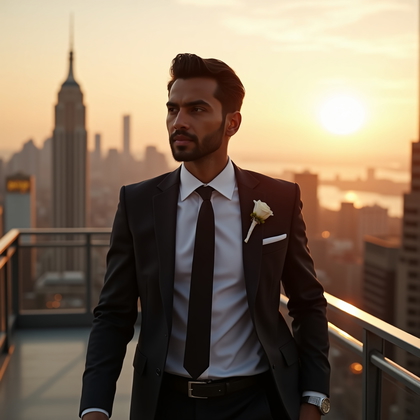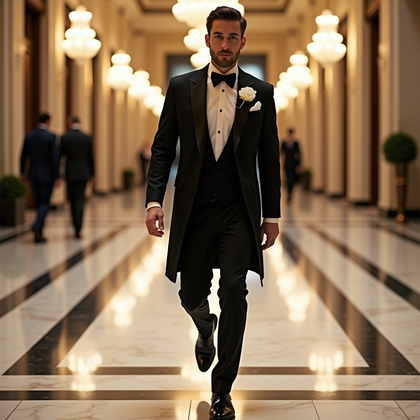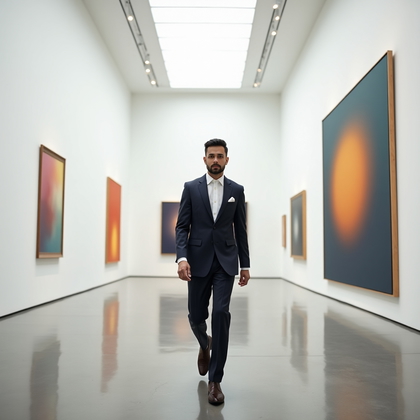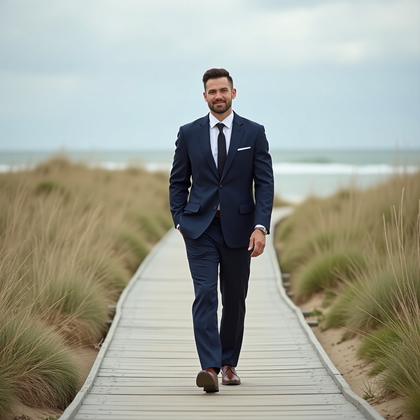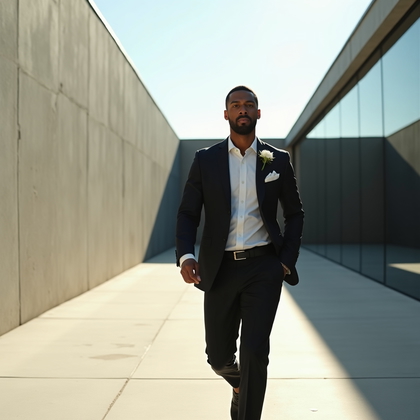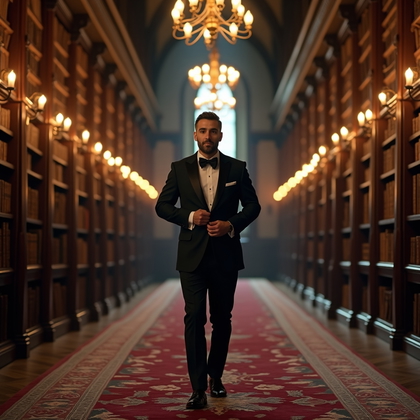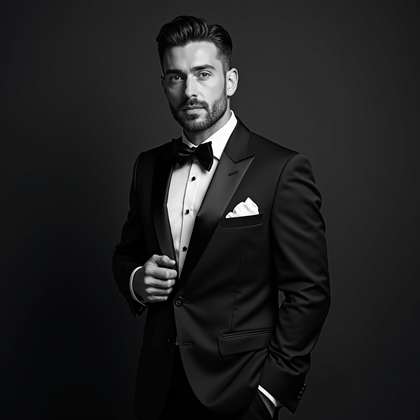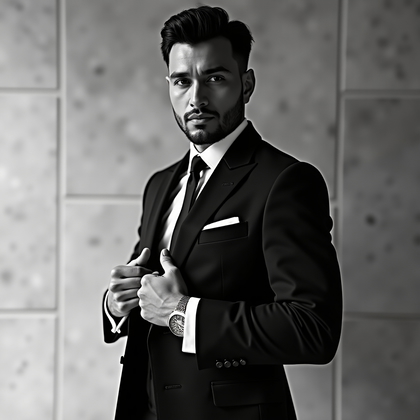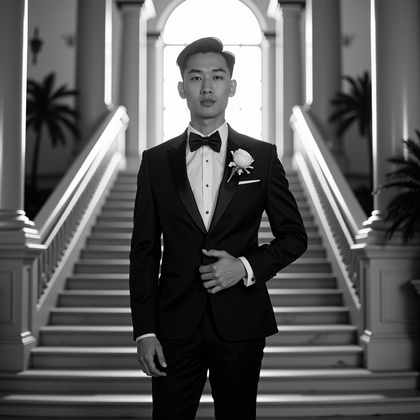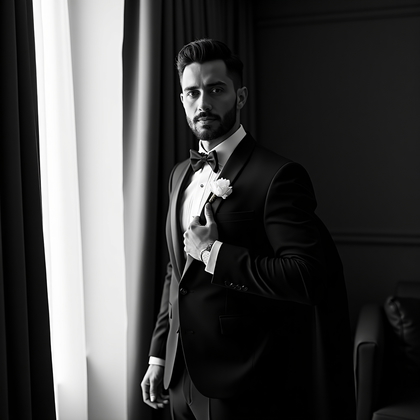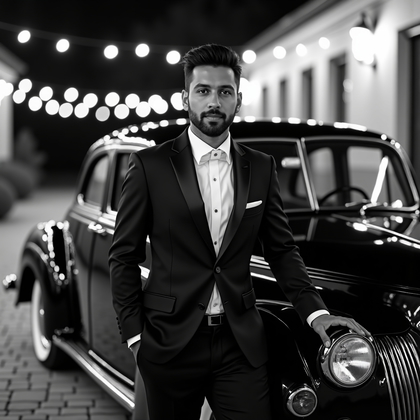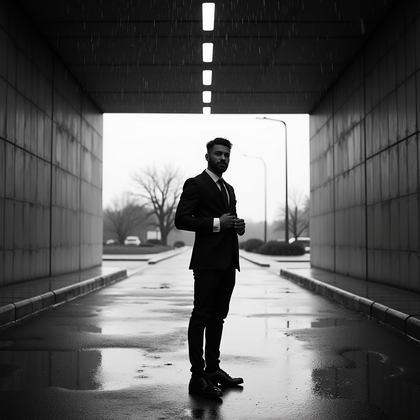Men's Wedding Photos, Suit Up
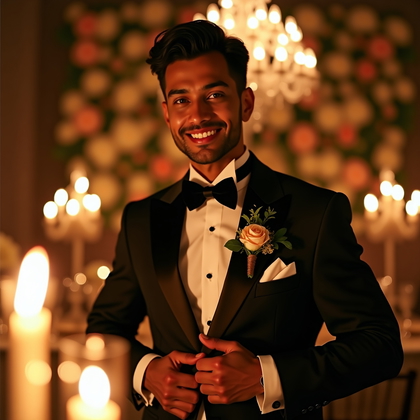
Want AI wedding photos that look premium, not fake? Want a suit that reads sharp, structured, and powerful? Want poses that work every time and scale across styles?
AI photo generation is simple when you control pose, light, and fabric detail. You set the scene. You define the body language. You force the model to show the suit right. Good prompts and clean constraints beat random styles.
This guide shows 10 men’s wedding photo types that deliver. You get clear pose goals, light direction, and strong prompt cues. Use them to create images that feel real and look expensive.
Tie or Bow Tie Adjustment
This is the easiest power move. Hands at the collar bring focus to the face and shirt. The motion adds life. It shows texture in the tie or bow tie. It frames the jaw. It hides awkward hands. It feels intentional and masculine.
For AI, specify a crisp shirt, precise knot, and clean collar lines. Ask for side window light to shape the jaw. Keep background simple. Use 50–85mm portrait feel, shallow depth of field, and high fabric detail. Remove wrinkles and crooked ties with negative prompts.
Click on a photo to transform it with your face
Jacket Buttoning or Lapel Grip
This pose sells the suit structure. Buttoning or gripping the lapel highlights the waist and the V chest line. It shows tailoring quality and shoulder shape. It keeps the hands busy and purposeful. It signals readiness.
For AI, call out a single-breasted jacket, one-button close, or a clear lapel pinch. Direct the chin slightly down. Use camera at chest height for authority. Add soft key light from 45 degrees. Avoid bent jacket edges and warped buttons with strong detail prompts and clean geometry requests.
Click to create your version
Window-Light Jawline Close-Up (head-and-shoulders)
Side window light carves the jaw and cheekbone. It creates depth with a simple setup. Head-and-shoulders makes the face and tie the hero. It looks intimate and expensive. It hides messy backgrounds and focuses on the groom’s presence.
For AI, say “window-side soft light, falloff across face.” Ask for crisp collar, neat knot, subtle skin texture, and clean catchlights. Keep the background muted. Use tight framing. Push micro-contrast on fabrics and keep skin natural, not plastic.
Click on a photo to make it real with your face
Bold Tailored Hero Portrait (full-length)
This is your flagship shot. Full-length shows fit, stance, and line from shoulder to shoe. You prove tailoring here. The stance must be strong, feet planted, spine tall, chest open. You control symmetry and posture.
For AI, request a clean backdrop or luxury interior with depth. Call out tapered trousers, sharp crease, and polished shoes. Keep lens feel around 50mm to avoid distortion. Light from the side for shape. Avoid baggy knees, short sleeves, or warped lapels with strict fit keywords and high detail realism.
Click on a photo to replace their face with yours
V-Shape Angled Posture Shot
The angled V-shape builds power. Turn the body 30–45 degrees, keep shoulders broad, and let the chest lead. This slims the waist and expands the upper body. It adds presence without tension.
For AI, ask for torso angle, shoulder back, chin forward and down a touch. Add subtle rim light to separate suit from background. Keep hands light: one in pocket, one at lapel. Use a medium contrast grade to show cloth texture without glare.
Click on a photo to insert your face
Post-Ceremony Ring + Hands-on-Lapel Portrait
Feature the ring without losing the suit. Hands on lapel lift the ring to the chest line. It reads committed and composed. The gesture gives meaning and structure in one frame.
For AI, specify a close mid-shot. Ask for ring focus with shallow depth. Keep nails clean and skin natural. Set a soft key light and a gentle fill. Make sure the lapel flower or pocket square is aligned. Avoid bent fingers and fake metal shine with realistic material prompts.
Click on a photo to try your face in it
Sunset or Blue-Hour City-Lights Portrait
Twilight adds drama. Warm sky or cool city lights give cinematic depth. The suit pops against bokeh lights. Skin looks smooth. This time window delivers mood fast.
For AI, state “blue hour” or “golden sunset,” with backlight rim and soft key from front. Use bright city bokeh or skyline silhouettes. Keep white shirt clean and highlight edges of the lapel. Use a slight haze or glow for atmosphere. Guard against color cast on the shirt with balanced white prompts.
Click on a photo to swap your face in
Lean-and-Laugh Candid
Controlled candid beats stiff posing. A light lean and real smile relax the frame. It shows personality but still showcases the suit. The lean adds shape and energy.
For AI, demand a natural grin, eyes engaged, shoulders relaxed. Lean into a wall, doorway, or railing. Use soft directional light, not flat. Keep tie straight and jacket tidy even while laughing. Remove warped teeth and mouth artifacts with clean facial detail prompts.
Click on any photo to make it yours
Purposeful Stride (movement portrait)
Walking shots are dynamic and strong. A forward stride with focus ahead looks confident. The jacket moves slightly and feels alive. This sells momentum without chaos.
For AI, set a low to mid camera angle. Ask for one foot forward, heel down, coat movement, and shirt stable. Keep shutter feel crisp. Use urban walkway or venue corridor for lines that guide the eye. Avoid leg distortion by keeping a 35–50mm look, not ultra-wide.
Click on any photo to make it yours
Classic Black & White Power Portrait
Black and white strips noise and pushes shape. It highlights suit structure, jawline, and eyes. It is timeless and ruthless in a good way. It hides color distractions and elevates contrast.
For AI, request rich blacks, controlled highlights, and medium grain. Use side light for depth. Keep background simple and mid-tone. Sharpen fabric edges and keep skin clean. Avoid blown shirts and muddy blacks with tonal control prompts.
Click on a photo to swap your face in
Conclusion: Build a Set that Hits Hard
Use these ten shots to cover every angle that matters. You control pose, light, and detail. You show the suit, the face, the ring, and the mood. You avoid clutter and distortion. You keep the hands purposeful. You shape the jaw with smart light. You lock in premium texture.
Combine a tight close-up, a full-length hero, and one movement frame. Add twilight drama and a classic black and white. Keep prompts strict on fit, fabric, and geometry. This is how you get men’s wedding photos that look expensive, feel real, and work every time.
